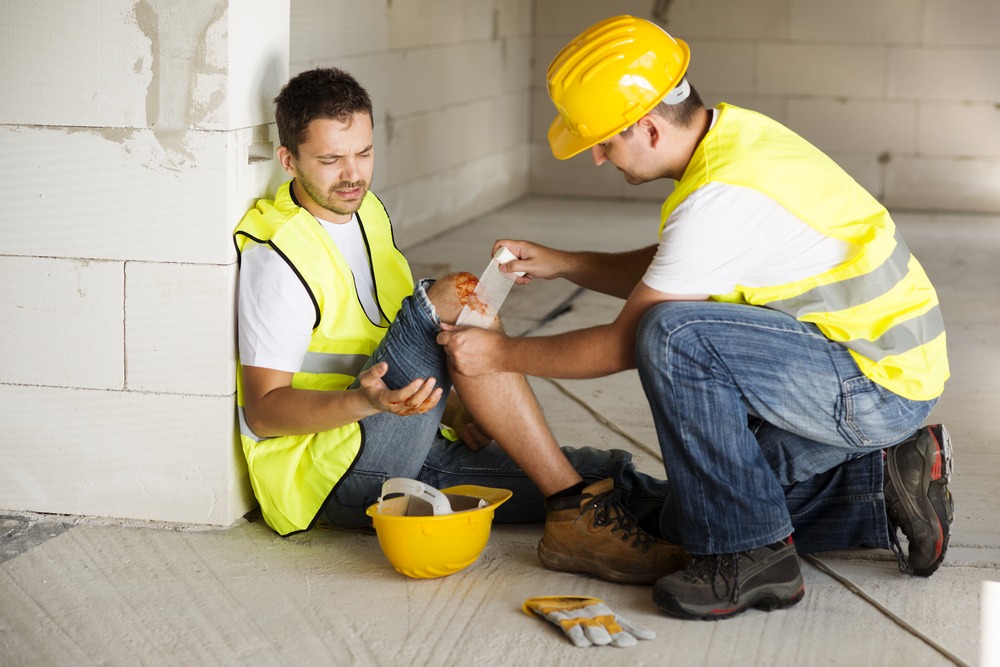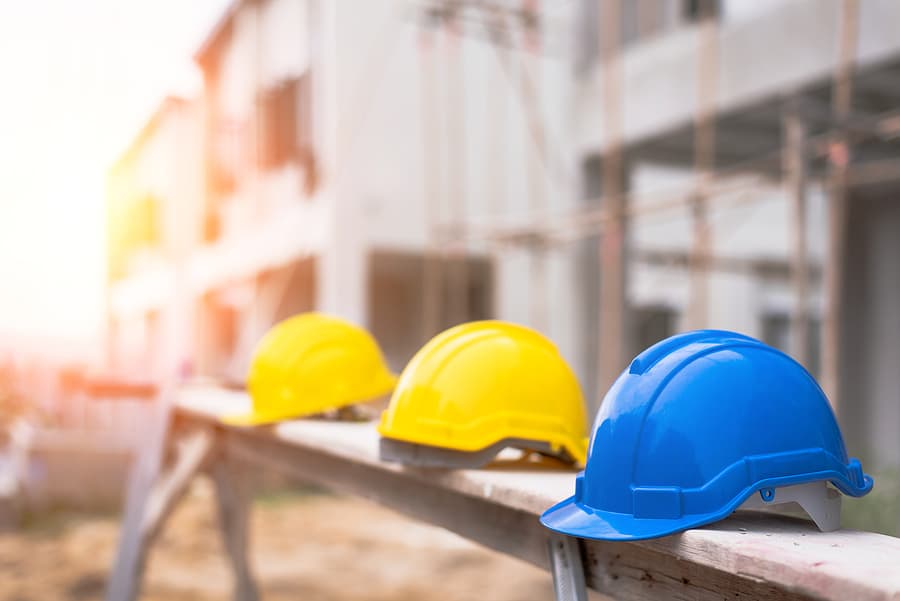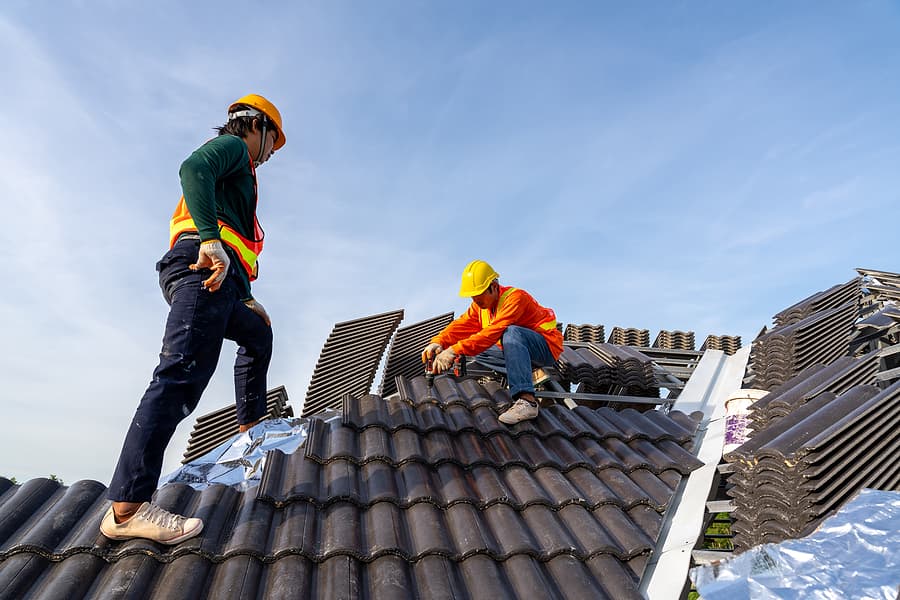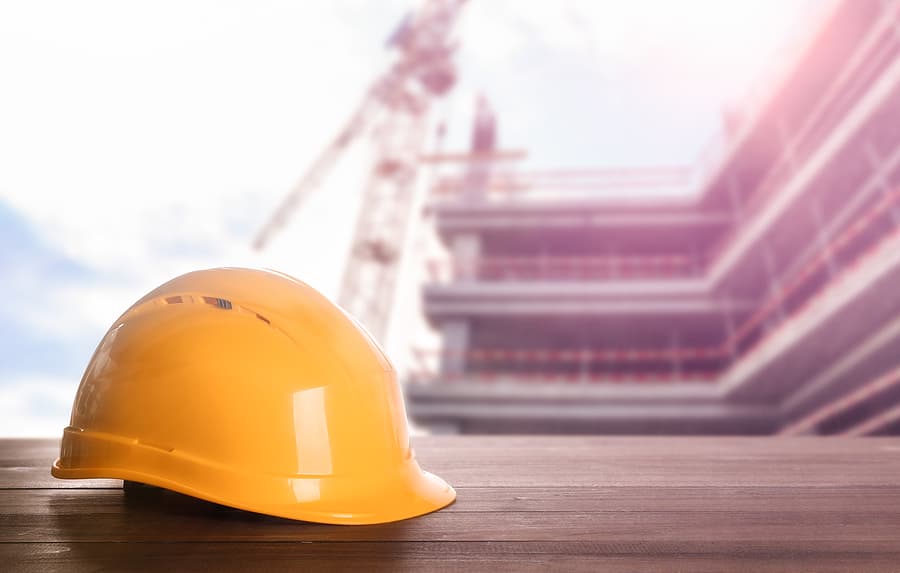Construction sites have countless potential accident risks. In fact, construction workers, particularly those working for private construction companies, have a higher risk of dying than people working in most other professions. Construction workers frequently have to deal with dangerous chemicals, power tools, and heavy equipment. One hazard, however, stands out above the rest. Reach out to a construction accident lawyer.
The Most Common Type of Construction Accident
 Falls represent the most common type of construction accident, including more than one in three, or 36.4 percent, of work-related deaths in the construction industry. Workers may fall from an upper floor of a building to a lower one, from the top of the building, from scaffolding, or from ladders. Such falls can cause severe injuries, which, in many cases, can cause long-term pain and limitations for the victim.
Falls represent the most common type of construction accident, including more than one in three, or 36.4 percent, of work-related deaths in the construction industry. Workers may fall from an upper floor of a building to a lower one, from the top of the building, from scaffolding, or from ladders. Such falls can cause severe injuries, which, in many cases, can cause long-term pain and limitations for the victim.
Common Injuries From Falls
Falls on construction sites can cause many potential injuries.
Head Injuries
While construction workers usually have to wear hard hats while on the job site, those hard hats may provide relatively little protection in the case of a serious fall. Head injuries, including traumatic brain injury, can cause either short- or long-term limitations for many construction workers. Construction workers generally have to remain off the job until they recover from the brain injury. If the injury causes permanent brain damage, it may prevent them from working and doing some of the normal daily activities they used to enjoy.
Back and Neck Injuries
Falls can cause serious back and neck injuries, including:
- Spinal cord injuries
- Herniated discs
- Ligament, tendon, or other soft tissue damage
In many cases, the limitations from a serious back or neck injury can lead to long-term complications, including mobility challenges that make it difficult for construction workers to get back on the job.
Internal Injuries
Falls from a significant height can cause internal injuries, including internal bleeding or organ trauma. Those injuries may not be immediately evident to the naked eye. Therefore, it is important for any worker who suffers a serious fall to get medical attention right away.
Broken Bones
Falls often result in broken bones due to the force of the accident. Even more serious injuries can occur if something falls on the victim after he hits the ground. Broken bones may cause long-term limitations for many victims, including the inability to work while recovering.
Soft Tissue Injuries
Even minor falls can cause sprains and strains. In some cases, ligament and tendon damage can prove more serious than broken bones. These types of injuries may cause longer-term limitations and keep construction workers away from work longer.
How Falls Occur on Construction Sites
Due to the many hazards present on construction sites, falls can occur for a variety of reasons. Most construction companies take many steps to help protect against falls. OSHA, the Occupational Safety and Health Administration, has specific safety regulations in place designed to prevent employees from falling from platforms, workstations, floors, and roofs. However, some construction companies may not follow those regulations.
Unstable Equipment
Construction workers may use several options to help them climb to the heights they need to work, including ladders and scaffolding. Sometimes, however, the equipment may prove rickety or unstable, increasing the risk of a devastating fall.
Workers may struggle to keep their balance as a ladder sways back and forth, or a piece of scaffolding fails to withstand the test of wind or hazards. Placing ladders and scaffolding on unstable ground may increase that instability and raise the fall risk.
Improper Use of Equipment
Even when construction workers have the right equipment in place, if they do not use it correctly, they may end up tumbling down. For example, many ladders have strict regulations regarding where workers can stand while using them.
Using an extra rung up the ladder may not seem like a serious problem, especially for a construction worker who needs to reach just a few inches higher. However, some construction workers may take that chance rather than take the time to find another ladder or piece of equipment. In addition, positioning ladders on unstable surfaces or raising them too high may increase the risk of a fall.
Lack of Fall Protection
In the construction industry, workers must have railings and fall protections in place at an elevation of six feet or more, according to OSHA regulations.
That may include:
- Covering or guarding holes in the floor
- Providing guard rails around elevated platforms or when workers need to work at high elevations
- Providing warnings about potential hazards
A lack of adequate fall protection and warnings can make it much more dangerous for construction workers to continue working at the heights they need to reach to continue their jobs.
Inadequate Safety Equipment
Construction workers often need to work at potentially dangerous elevations. They may need to work on roofs, on the sides of tall buildings, or at precarious angles and positions as they work to perform their assigned duties.
To work at those heights, however, workers may need personal protective equipment, including:
- Safety harnesses and lines
- Nets
- Stair railings and handrails
Construction companies may need to provide those tools to their workers whenever needed. Unfortunately, some construction companies may not provide adequate fall protection equipment.
Even if equipment is provided, construction companies may provide workers with old or damaged equipment that may not take the strain of an actual fall. Some construction companies may also fail to provide harnesses and lines for all body sizes, including providing equipment too large or too small for some workers on the site. Poorly-sized safety equipment may fail in the event of an emergency.
Many falls on construction sites occur because workers either do not have or do not use that vital safety equipment.
Dangerous or Damaged Flooring
In many cases, construction workers go in to repair damage. Sometimes, however, those workers may not realize the full extent of the damage the building has sustained. When the floor or roof gives way, it can lead to a devastating fall for which the worker cannot prepare ahead of time.
Workers may also not expect damaged flooring to give way, so they may have no fall protection as they move across that area. Falling through damaged flooring can increase the risk of severe lacerations and other fall injuries.
Inadequate Worker Training
Construction workers frequently need to take on job duties that most people never need to fulfill, including working in potentially dangerous conditions without posing a danger to themselves and others. Workers need basic training in OSHA standards and other fall prevention measures in many industries, including construction.
Sometimes, however, workers end up on a job site without the practical knowledge they need to complete their job duties safely, and employers may not provide the necessary training. If workers do not know about what safety protocols they must follow or what safety equipment they have available, they may be more likely to take dangerous chances that can result in a devastating fall.
Trip Hazards
Construction sites can quickly end up cluttered. Tools end up scattered across the site, materials get piled up or left sitting, and, in many cases, workers need to take care of basic demolition tasks before they can start putting the building back together.
In some areas, however, trip hazards can pose a much more substantial danger: if a worker trips over equipment left sitting too near the edge, for example, it can result in a fall from a significant height. In addition, simply falling over items on a construction site can pose a danger since workers may have serious laceration injuries or bruising. Cleaning up around the job site can help protect many workers against the possibility of serious injury.
Slippery or Uneven Surfaces
When construction workers finish their jobs, they usually leave even, safe flooring behind them. While working on the site, however, workers may end up dealing with much more hazardous surfaces.
Floors can prove slippery, uneven, or difficult to navigate as construction workers take care of reconstruction. Those uneven floors can pose a significant hazard for many workers, making it difficult for them to navigate the area safely.
The dangers can increase when workers must navigate unstable floors with a large number of materials or heavy equipment, which can interfere with visibility and balance. A trip or slip and fall in these circumstances can cause significant injury to many construction workers.
After a Construction Site Fall: Your Next Steps
Many construction companies have clear requirements in place when it comes to reporting devastating accidents and dealing with the aftermath. The company may require workers to immediately report a fall to a supervisor and seek medical attention.
If you suffer a fall on a construction site, follow those steps to preserve your right to seek compensation through a workers’ compensation or tort claim.
Make sure the accident report accurately reflects what led to your accident.
When you file a workers’ compensation claim, you will generally have the right to compensation regardless of who caused the accident or bears responsibility for it. This includes conditions under which your negligence may have contributed to the accident: for example, failing to take adequate safety precautions despite clear training and regulations on the site.
You want your accident report to note the true cause of your accident and where and when it occurred. The cause of the accident may help determine when you have the right to file an injury claim rather than or in addition to a workers’ comp claim, so having an accurate assessment of what led to your fall can prove crucial.
File your claim through workers’ compensation
Workers’ compensation will generally pay all medical expenses associated with an on-the-job accident and provide you with compensation for up to 2/3 of your income during your recovery. However, you may need to file a workers’ compensation claim quickly to ensure you get the full benefits you deserve.
Delays in filing can also mean a delay in getting your workers’ comp checks, which can interfere with your ability to pay your bills and manage other costs during your recovery.
Follow your care provider’s instructions.
Your care provider will work with you to create a care plan that will help get you back on your feet as soon as possible. If you fail to follow those instructions, you may find that workers’ comp will refuse to pay what you might otherwise deserve for your injuries, including coverage for any treatment of worsening injuries.
Keep copies of your medical records and any instructions issued by your care provider.
You must take responsibility for your care as you recover from fall injuries. Make sure you keep copies of your medical records and the treatment recommended by a medical care provider so that you can deal with any challenges workers’ comp may throw your way.
Contact a construction accident lawyer
Sometimes, you may need a construction accident lawyer to help review your right to compensation and assistance through workers’ compensation.
You may need a construction accident lawyer if:
- Workers’ compensation denies your claim
- Workers’ compensation does not pay for needed medical care promptly
- You will need to pursue a settlement due to permanent injuries from your fall
- You have questions about your right to compensation or how to navigate your claim
Additionally, you may have a claim against the at-fault party if it was not your employer. Workers’ compensation is generally the only recourse you have if your employer or coworkers were negligent and caused your injury. However, if another subcontractor, general contractor, the land owner, or any other third party was at fault, you can bring a claim against them in tort. These civil claims may allow you to recover damages you cannot get through workers’ compensation.
If you suffered injuries in a fall on a construction site, you might need a lawyer to help guide your claim and provide you with more information about your rights. Contact the experienced personal injury attorneys at Gruel Mills as soon as possible for a free consultation to ensure you do not miss out on the compensation you deserve.



